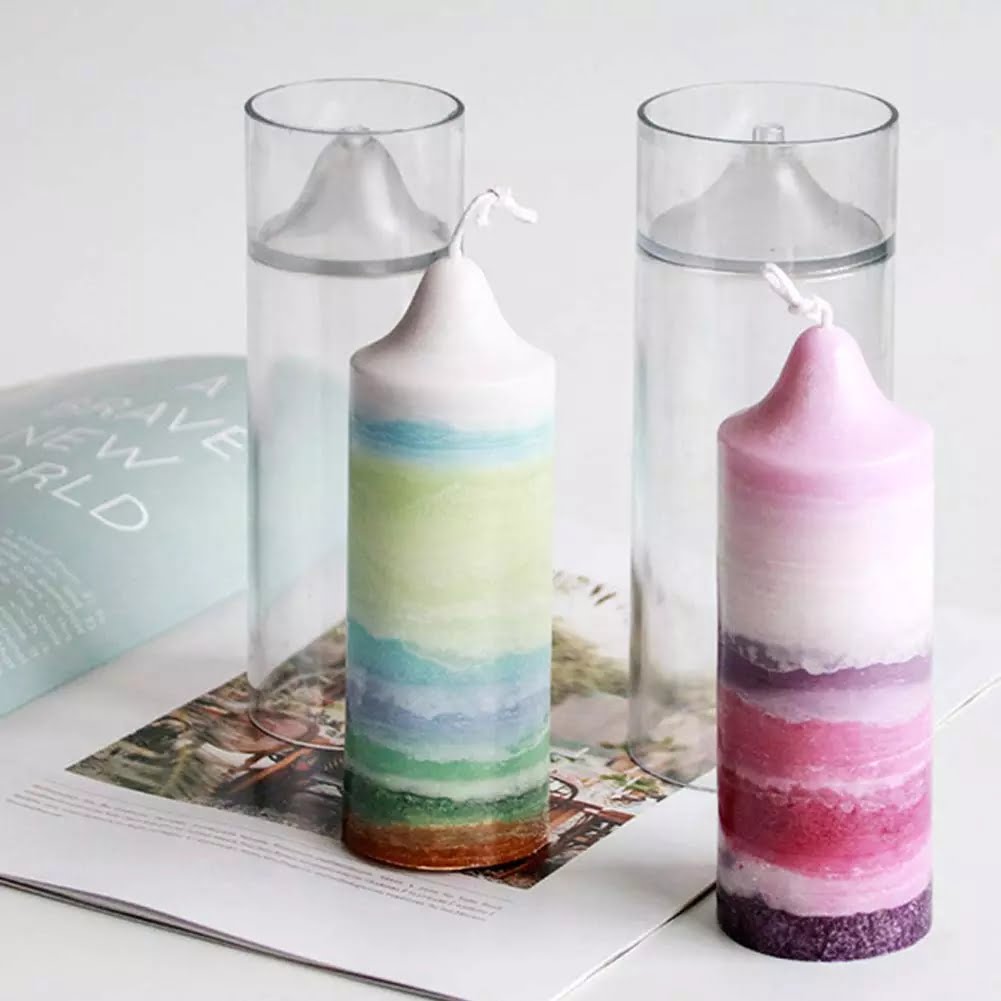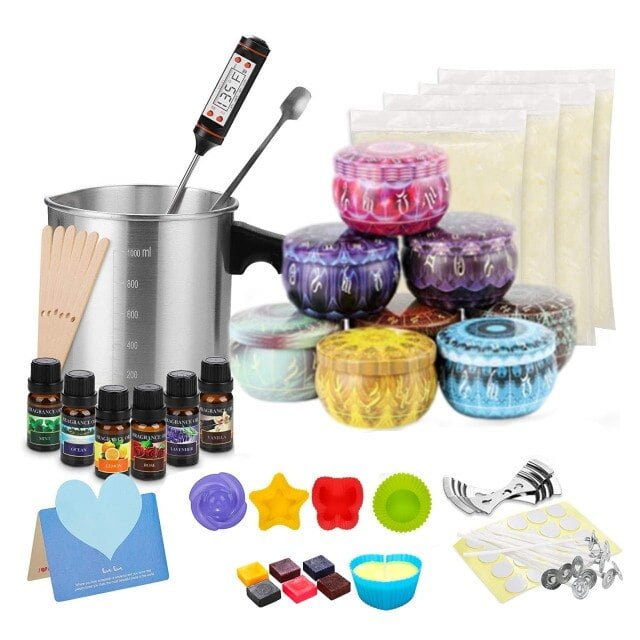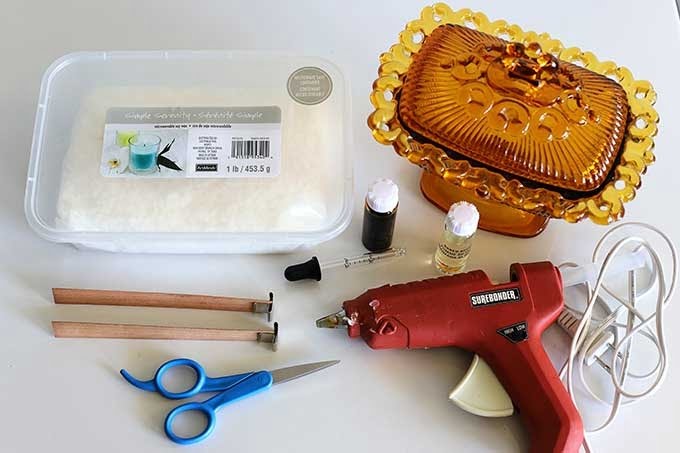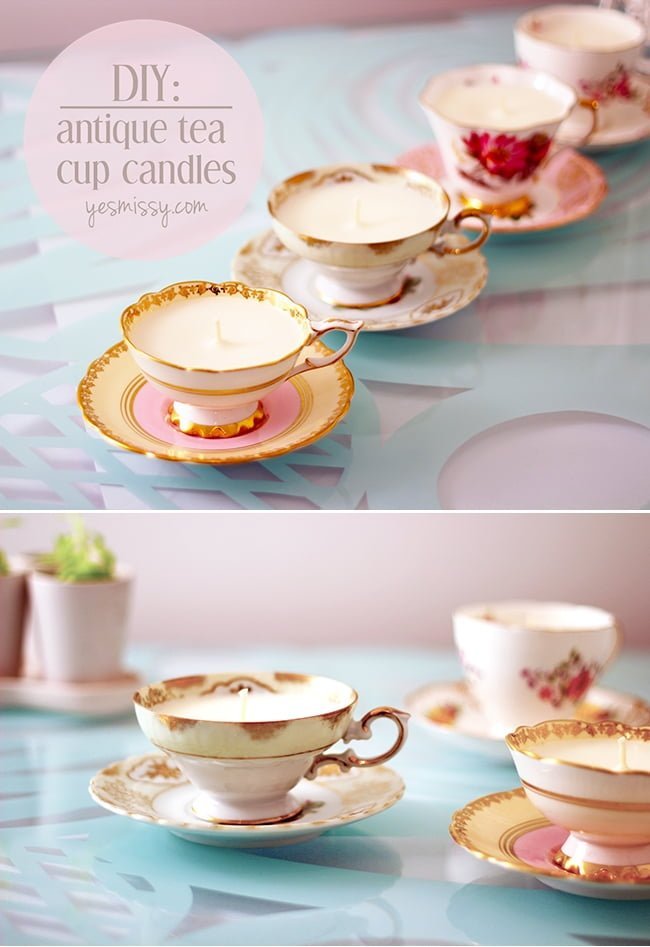Candle making has become an increasingly popular hobby, allowing individuals to create unique and personalized candles for their homes or as gifts. In this “How Its Made” series, we delve into the fascinating world of candle making, exploring its historical origins and providing a step-by-step guide to creating your own beautiful candles.
The art of candle making has captivated people across centuries, from ancient civilizations to modern times. It offers a sense of satisfaction and fulfillment that comes from creating something beautiful and functional with your own hands. Whether you are a beginner or an experienced crafter, learning the ins and outs of candle making can be a rewarding endeavor.
In this series, we take inspiration from the popular television show “How Its Made” as we dive deep into the art of candle making. We will explore the historical background of candle making, tracing its roots back to ancient civilizations such as the Egyptians and Romans. Furthermore, we will discuss the materials and tools needed for this craft, along with a comprehensive step-by-step guide on how to make your own candles.
Join us on this journey where we bring you the joy and rewards of candle making. Discover the secrets behind creating stunning designs, troubleshoot common problems that may arise during the process, gain insights into advanced techniques and special effects, learn tips for decorating and packaging your homemade candles, and even explore the potential of turning your passion for candle making into a profitable business venture.
Whether you are seeking a creative outlet or simply enjoy filling your home with warm ambiance and delightful scents, candle making is an art form that offers endless possibilities. So grab your wax, wicks, fragrances, and containers as we embark on our exploration of “How Its Made: Candle Making”.
Historical Background
Candle making has a rich historical background, dating back thousands of years to ancient civilizations such as the Egyptians and Romans. These early cultures used various materials like beeswax, animal fat, and plant wax to create candles that served multiple purposes in their communities. Understanding the origins of candle making not only provides a fascinating glimpse into history but also showcases the ingenuity of our ancestors.
The Egyptians were among the first to develop a method for producing candles. They made them by soaking reeds in animal fat or tallow, which acted as both a fuel source and a wick. These early candles were primarily used for lighting homes and temples, as well as for religious ceremonies. The Romans later improved this technique by introducing the use of beeswax, which produced cleaner and less smoky flames.
Throughout the centuries, candle making techniques continued to evolve. In medieval Europe, for example, candle makers began using molds made from stone or metal to create more uniform shapes and sizes. During the Renaissance period, advancements were made in wick production with the introduction of plaited cotton wicks that burned longer and more efficiently.
By the 18th century, innovations in candle making increased further with the discovery of spermaceti wax from whale oil. This new wax had superior burning qualities compared to previous materials and led to the production of high-quality candles widely used at that time.
As industrialization swept through the world during the 19th century, traditional candle making methods gradually declined with the emergence of mass-produced paraffin wax candles. Today, however, there is a resurgence in interest for handcrafted candles made with natural ingredients like soy wax or beeswax as people appreciate their aesthetic appeal and eco-friendly nature.
Overall, understanding the historical background of candle making not only adds depth to this art form but also allows us to appreciate how far it has come over centuries of human innovation and creativity.
Materials and Tools Needed for Candle Making
Candle making is a craft that requires specific materials and tools to ensure successful results. Whether you are a beginner or an experienced candle maker, having the right supplies is essential. In this section, we will discuss the comprehensive list of materials and tools needed for candle making.
- Wax: The main ingredient in candles, wax comes in various types such as paraffin, soy, beeswax, and gel. Each type of wax has its own unique characteristics and melting points, so it’s important to choose the one that best suits your needs.
- Wicks: Wicks are responsible for burning and providing a steady flame in candles. They come in different sizes and materials like cotton or wooden wicks. Selecting the right wick size is crucial to ensure proper burning and prevent issues like tunneling or excessive smoke.
- Fragrances: Adding fragrance to candles enhances their appeal and creates a pleasant atmosphere when lit. There is a wide range of candle fragrances available, including floral, fruity, fresh, or seasonal scents. It’s important to use fragrance oils specially designed for candle making to ensure a proper scent throw.
- Dyes: If you want colored candles, dyes are essential to achieve vibrant hues. Candle dyes come in liquid or solid form and can be mixed to create custom colors. It’s important to use dyes specifically made for candles as other types may interfere with the burning process.
- Containers: Containers are used for pouring melted wax into, creating container candles that can be easily burned without any additional holders or trays. Glass jars or tins are commonly used as candle containers due to their heat resistance and aesthetic appeal.
- Thermometer: A thermometer is necessary to monitor the temperature of the melting wax accurately. Maintaining the correct temperature throughout the candle making process ensures proper adhesion between layers and prevents issues like frosting or overheating.
- Pouring Pitcher: A pouring pitcher or a double boiler is used to melt and pour wax safely. It allows for easy and controlled pouring, minimizing spills or accidents. Make sure to designate a specific pitcher for candle making to avoid contamination from other substances.
- Heat Source: To melt the wax, you will need a heat source like a stove, hot plate, or melting pot specially designed for candle making. It’s important to follow safety precautions and never leave the melting wax unattended.
- Molds: If you are interested in creating unique-shaped candles, molds are necessary. They come in various shapes and materials like silicone, metal, or plastic. Silicone molds are popular among candle makers due to their flexibility and ease of use.
- Miscellaneous Tools: Other essential tools include a heat-resistant surface for pouring (like aluminum foil), stirring utensils (preferably heat resistant), adhesive tabs or glue dots for securing wicks, and a scale for accurately measuring ingredients.
Having these materials and tools ready before starting your candle making journey will help you create beautiful candles with ease and precision. Experiment with different combinations to find your own unique style and enjoy the art of candle making.
| Materials | Tools |
|---|---|
| Wax | Thermometer |
| Wicks | Pouring Pitcher |
| Fragrances | Heat Source (stove) |
| Dyes | Molds |
The Candle Making Process
Candle making is a creative and fulfilling hobby that allows individuals to express their artistic side while enjoying the soothing ambiance and fragrant atmosphere of homemade candles. In this section, we will provide a step-by-step guide to help you navigate through the candle making process and create beautiful candles of your own.
- Prepare your workspace: Before starting the candle making process, it is essential to set up a clean and organized workspace. Lay down newspaper or a plastic sheet to protect your surfaces from wax spills. Gather all the necessary materials and tools, such as wax, wicks, containers, fragrance oils, dyes, a double boiler or melting pot, a thermometer, and a stirring utensil.
- Melt the wax: Start by melting your chosen wax in a double boiler or melting pot over low heat. Stir occasionally until the wax reaches its melting point, which varies depending on the type of wax used. Use a thermometer to ensure that the wax does not exceed its recommended temperature range.
- Add fragrance and dye: Once the wax has melted completely, remove it from the heat source and let it cool slightly before adding fragrance oils and dyes. Stir gently but thoroughly to distribute the scent and color evenly throughout the melted wax.
- Prepare the container and wick: While waiting for the scented and colored wax to cool slightly further, prepare your chosen container by placing a pre-tabbed wick at its center. You can use adhesive tabs or hot glue to secure the wick’s metal base to the bottom of the container.
- Pouring the wax: Slowly pour your scented and colored wax into the prepared container, being careful not to disturb or misposition the wick. Leave some space at the top of the container for any additional decorations or toppings you may want to add later.
- Aligning and curing: To ensure that your candle burns evenly when lit, gently straighten the wick by gently pinching it between your fingers and aligning it with the center of the container. Allow the candle to cool and cure completely for several hours or overnight before trimming the wick to a suitable length.
By following these step-by-step instructions, you can create beautiful and fragrant candles that will enhance any space or occasion. Remember to exercise caution when working with hot wax, and always follow safety guidelines to prevent accidents or injuries during the candle making process. Enjoy the experience of creating your own unique candles and let your creativity shine.
Choosing the Perfect Candle Design
When it comes to candle making, one of the most exciting aspects is choosing the perfect design. The design of a candle can greatly impact its overall aesthetic and functionality. Whether you are making candles for personal use or as gifts, selecting the right design is essential. In this section, we will explore various candle design options and discuss the importance of selecting the right design based on the purpose or occasion.
There are several different types of candle designs to consider when embarking on your candle-making journey. The most common designs include containers, pillars, votives, and tapers. Container candles are made by pouring melted wax into various types of containers such as jars, cans, or glasses. These candles are popular because they are easy to make and offer endless possibilities for customization.
Pillar candles, on the other hand, are freestanding and do not require any type of container. They come in various shapes and sizes and can be used for both decorative and functional purposes. Votive candles are small cylindrical candles that fit into votive holders.
They are often used in religious or ceremonial settings but can also be used for home decor or special occasions. Taper candles are long and slender candles that add elegance to any setting. They are typically used in formal dining situations or as decorative accents.
Choosing the right design largely depends on the purpose or occasion for which the candle will be used. For example, if you’re looking to create a romantic atmosphere, taper candles would be a great choice as they provide a soft and flickering light. On the other hand, if you’re making candles for a baby shower or wedding favor, container candles allow for creative packaging options that can coordinate with the event theme.
When selecting a candle design, it’s important to consider factors such as burn time, fragrance diffusion, stability, and safety precautions. It’s also worth experimenting with different designs to find what works best for you and your candle-making style. Ultimately, the perfect candle design is one that brings joy to both the maker and the recipient.
| Type of Candle Design | Description |
|---|---|
| Container candles | Made by pouring melted wax into various types of containers such as jars, cans, or glasses. Easy to make and customizable. |
| Pillar candles | Freestanding candles that come in various shapes and sizes. Can be used for decorative or functional purposes. |
| Votive candles | Small cylindrical candles that fit into votive holders. Often used in religious or ceremonial settings but can also be used for home decor or special occasions. |
| Taper candles | Long and slender candles that add elegance to any setting. Typically used in formal dining situations or as decorative accents. |
Troubleshooting Common Candle Making Issues
Uneven Burning
One common issue that candle makers may encounter is uneven burning. Uneven burning can lead to wasted wax and a shorter burn time for the candle. There are several factors that can contribute to this problem, including the type of wax used, wick size, and container size.
To prevent uneven burning, it is important to choose the right wick size for the type of wax being used. A wick that is too small may not provide a sufficient flame to melt the wax evenly, while a wick that is too large may create excessive heat and cause uneven melting. It is recommended to refer to a wick size chart or consult with experienced candle makers for guidance on selecting the appropriate wick size.
In addition, the container size should be considered when troubleshooting uneven burning. If the container is too wide compared to the diameter of the wick, it can result in tunneling, where only a small portion of the wax melts and burns. To prevent tunneling, it is recommended to use containers that have an appropriate width-to-wick ratio.
Air Bubbles
Another common issue that candle makers may face is the presence of air bubbles in their finished candles. Air bubbles not only affect the aesthetics of the candle but can also cause problems during burning, such as an uneven flame or flickering.
To minimize air bubbles in your candles, it is important to properly heat and pour the wax. When melting the wax, make sure to do so at an appropriate temperature according to the wax manufacturer’s instructions. Overheating can create air pockets within the wax and lead to trapped air bubbles. When pouring the wax into containers, pour slowly and steadily, allowing any air bubbles to rise to the surface before solidifying.
If you still notice air bubbles in your candles after pouring, you can try using a technique called “topping off.” This involves reheating a small amount of wax and pouring it over the area with air bubbles. The additional wax will fill in the gaps and help eliminate the bubbles.
Wick-Related Issues
Candles that have wick-related issues can be frustrating for candle makers. Common problems include wicks that tunnel or drown, resulting in improper burning or extinguished flames.
To prevent tunneling, make sure to trim the wick to an appropriate length before each use. Long wicks can lead to excessive heat and can cause tunneling. Additionally, if you are using a container candle, ensure that the wick is centered and straight when pouring the wax. A crooked or off-centered wick can contribute to uneven burning.
On the other hand, if your candle has a drowned wick, where it is struggling to stay lit or constantly flickers, this may indicate that the wick is too large for the type of wax being used. Consider switching to a smaller-sized wick that provides a more balanced burn.
By troubleshooting these common candle making issues and implementing appropriate solutions, you can create high-quality candles that burn evenly and beautifully. Don’t be discouraged if you encounter these challenges along the way – with practice and patience, you’ll soon master the art of candle making.
Advanced Candle Making Techniques and Special Effects
Layering Techniques
One of the most popular advanced candle making techniques is layering, which involves creating candles with multiple layers of different colors or scents. To achieve this effect, start by pouring a layer of melted wax in your desired color or scent into the container. Allow it to cool and solidify before carefully pouring another layer on top.
Repeat this process until you have created all the desired layers. To create visually appealing patterns, you can use tools like toothpicks or skewers to swirl the different layers together before they completely set.
Marbling Techniques
Marbling is another creative technique that adds a unique and artistic touch to your candles. Start by melting different colored waxes separately and keeping them at a temperature where they are fluid but not too hot. Then, pour small amounts of each color into your container in a random fashion. Use a swirling tool such as a chopstick or skewer to gently mix the colors together, creating marbled patterns throughout the candle.
Embedding Objects
For those looking to add an extra element of surprise or personalization to their candles, embedding objects can be a fun technique to explore. Begin by choosing small objects that are safe and heat-resistant, such as dried flowers, charms, gemstones, or shells.
Place these objects strategically in the empty container before pouring the wax. As you pour the melted wax into the container, make sure to cover the embedded objects gently so that they are fully encased within the candle.
Special Effects
Crackling Wicks
To create a soothing ambiance reminiscent of crackling firewood, you can incorporate crackling wicks into your candles. These wicks are made from wood and produce a subtle crackling sound when lit. You can find these specialty wicks at many craft stores or online. To use them, simply insert the crackling wick into your candle mold or container before pouring the melted wax.
Color-changing Candles
Color-changing candles are a unique way to captivate your senses and add an element of surprise to your candle-making creations. These candles change color when lit, often transforming from one vibrant hue to another. The secret lies in using temperature-sensitive dyes or pigments that react when exposed to heat. As the flame heats up the surrounding wax, the color will gradually shift, creating an enchanting visual effect.
Scented Illusion Candles
If you want to create a whimsical experience for your senses, scented illusion candles can be a fascinating option. These candles are designed to release different scents at different stages of burning, creating an olfactory journey for those enjoying them. By layering different fragrances within the candle or strategically adding scent beads throughout the wax, you can create a delightful surprise for anyone who lights your scented illusion candle.
With these advanced techniques and special effects, you can elevate your candle making skills and create truly unique and captivating candles that will impress friends and loved ones. Whether it’s experimenting with layering and marbling techniques or introducing crackling wicks and color changes, there is no limit to the creative possibilities in advanced candle making. So let your imagination run wild and enjoy the awe-inspiring results of your handcrafted masterpieces.
Tips for Decorating and Packaging Homemade Candles
Decorating and packaging homemade candles is an essential step in candle making that adds a special touch to the finished product. Not only does it enhance the overall aesthetic appeal, but it also allows for creativity and personalization. In this section, we will explore some tips and ideas for decorating and packaging homemade candles.
When it comes to decorating homemade candles, there are endless possibilities. One popular option is using ribbons or twine to tie around the candle container or jar. This can add a touch of elegance or rustic charm, depending on the style of ribbon or twine chosen. Another idea is to attach small charms or trinkets that are relevant to the theme or fragrance of the candle. For example, a seashell charm can be added to a beach-themed candle.
Dried flowers can also be used to decorate homemade candles, giving them a natural and beautiful look. These dried flowers can be pressed onto the surface of the candle while the wax is still warm, creating a unique and textured design. Alternatively, dried flowers can be placed inside clear containers before pouring in the wax, so they are suspended within the candle as it burns.
In addition to decorating techniques, proper packaging is crucial for preserving the quality of homemade candles and ensuring they make an impression when given as gifts or sold. It is important to choose packaging materials that are heat-resistant and can protect the candles from moisture and dust. Clear cellophane bags are a popular choice as they allow customers or recipients to see the beauty of the candle while keeping it safe.
For a more professional presentation, personalized labels can be created for each individual candle. These labels should include important information such as fragrance type, burning time, safety instructions, and any special features of the candle. Labels not only provide valuable information but also give homemade candles a polished and branded look.
Decorating and packaging homemade candles can elevate them from simple creations into thoughtful gifts or marketable products. By incorporating personal touches and creative ideas, candle makers can leave a lasting impression on customers or recipients. Whether it’s adding ribbons, charms, dried flowers, or personalized labels, the options for decorating and packaging homemade candles are limited only by one’s imagination.
Candle Making as a Business Venture
Candle making can be more than just a hobby or a creative outlet; it can also be a profitable business venture. Many individuals have successfully turned their passion for candle making into a source of income, either as a part-time gig or as a full-fledged business. If you are interested in starting your own candle-making business, there are several steps you can take to get started.
Firstly, it is important to establish your niche in the market. Consider what makes your candles unique and different from others that are already available. This could be through the use of specific materials, fragrances, designs, or even packaging. Identifying your target audience and understanding their preferences will allow you to tailor your products to meet their needs.
Next, sourcing quality materials is crucial to create high-quality candles. Look for suppliers who offer a wide variety of wax options, wicks, fragrances, dyes, and containers at competitive prices. It is essential to test different materials and suppliers to ensure the consistency and durability of your final products.
Marketing plays an important role in establishing and growing your candle-making business. Utilize social media platforms such as Instagram and Facebook to showcase your products and engage with potential customers. Create aesthetically pleasing photos and videos that highlight the beauty and ambiance created by your candles. You can also consider collaborating with influencers or reaching out to local retailers to stock your candles.
Finally, consider selling your candles online through e-commerce platforms such as Etsy or creating your own website for direct sales. This allows you to reach a wider audience beyond your local community while providing convenience for customers who prefer online shopping.
Starting a candle-making business requires dedication, creativity, and continuous effort. However, with careful planning and execution, it has the potential to not only provide financial benefits but also fulfill one’s passion for this beautiful art form.
Conclusion
In conclusion, candle making is not just a hobby or a craft; it is an art form that allows individuals to express their creativity while also bringing warmth and ambiance to any space.
Throughout this article, we have explored the historical background of candle making, the materials and tools needed, the step-by-step process, various design options, troubleshooting common issues, advanced techniques and special effects, tips for decorating and packaging homemade candles, and even delved into the potential for candle making as a business venture.
Candle making offers a unique sense of satisfaction that comes from creating something with your own hands. The process can be therapeutic and calming, providing a much-needed break from our fast-paced lives. With each step in the candle making process, from choosing the materials to designing and decorating the finished product, there is a personal touch and attention to detail that makes each candle truly one-of-a-kind.
Not only does candle making bring joy to those who make them, but it also has the power to bring joy to others. Candles make wonderful gifts for loved ones or thoughtful additions to special occasions. Whether you choose to make candles for yourself or share them with others, the rewards of candle making are immeasurable.
So why not explore this beautiful art form and let your creativity shine through? Start your candle-making journey today and experience the joys it brings firsthand.

Welcome to my candle making blog! In this blog, I will be sharing my tips and tricks for making candles. I will also be sharing some of my favorite recipes.





